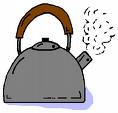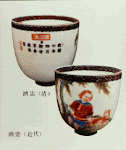
The main classifications at this stage are
non-alcoholic beverages
alcoholic beverages
and the two pages assess the gastronomic aspects of drink.
That means that beverage manufacture will not be looked at but marketing aspects will. There is not much concern in modern times for the effect of tea on western society but there is for alcohol. Elsewhere, influences on a nation's diet are looked at. The focus there is the food part of the diet. It is now appropriate to assess the beverage dimensions of a nation's diet.
.
Thus, we begin by assessing childhood and the song about Polly putting the kettle on. A range of topics is then discussed before ending with men whose abilities include showing off by drinking excessive amounts of beer.
There are two extremes here. The ordinary kettle at top left represents the taken-as-normal low level gastronomic interaction over the simple cup of tea or coffee. The "yard of ale" on the right has been chosen as the other end of the scale. It was that or a picture of racing drivers spraying everybody with Champagne. Although the "yard glass" is used by a minority of UK etc men to display their drinking prowess, it is a demonstration that false criteria are used to shout their worth. The discussion continues in the lower panel.
More information on the Chinese pictures can be found at
http://www.jiangnan.edu.cn/zhgjiu/u7-1-2.htm
The ancient Bierstein comes from
http://www.123rf.com/photo_746872.html
The Tappit Hen illustrates that Scotsmen in the past didn't need finger holes to show that they could drink with one hand. Their valour in that respect has contributed to the drink problem from ancient to modern times in Scotland.
.







No comments:
Post a Comment